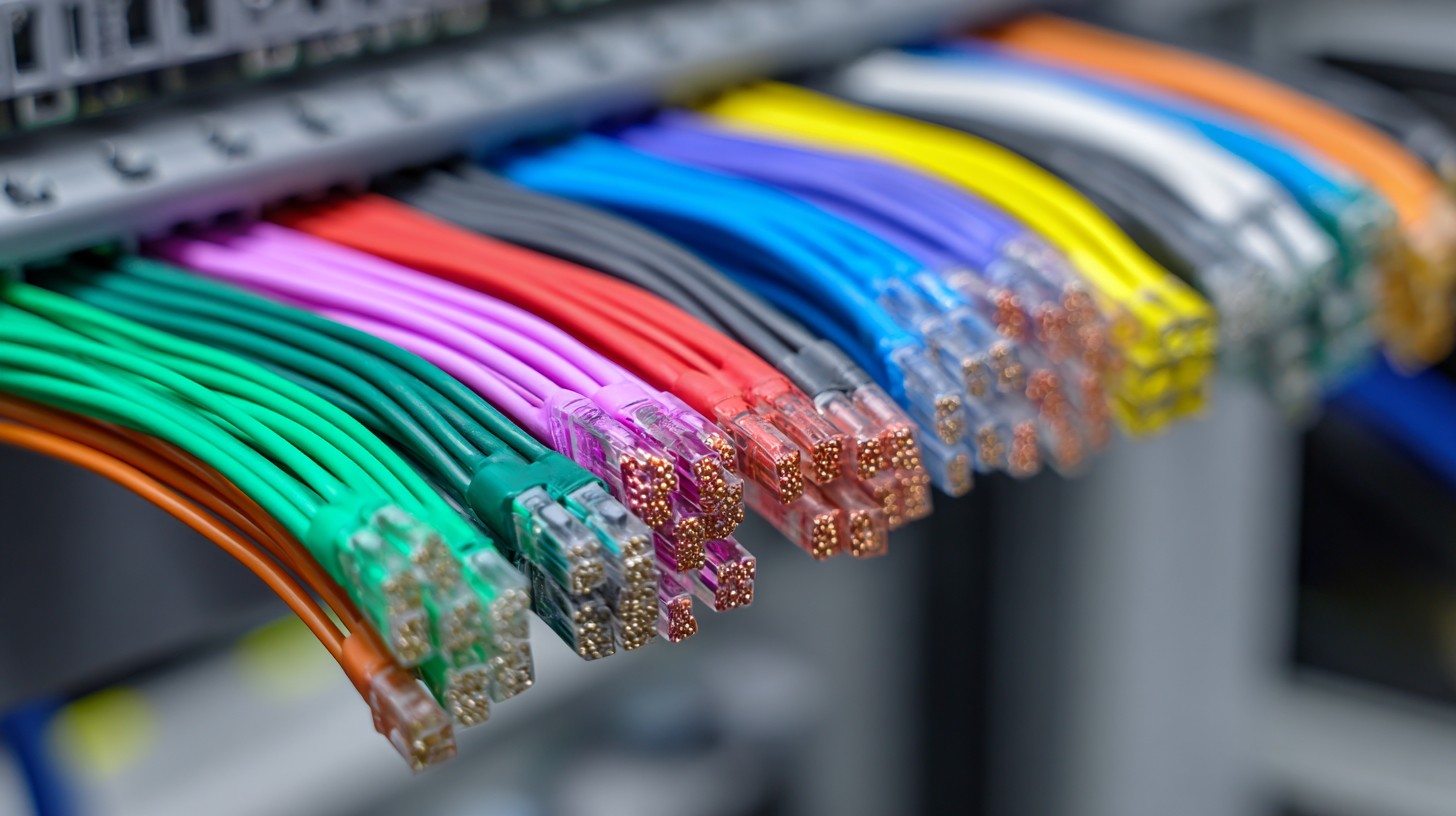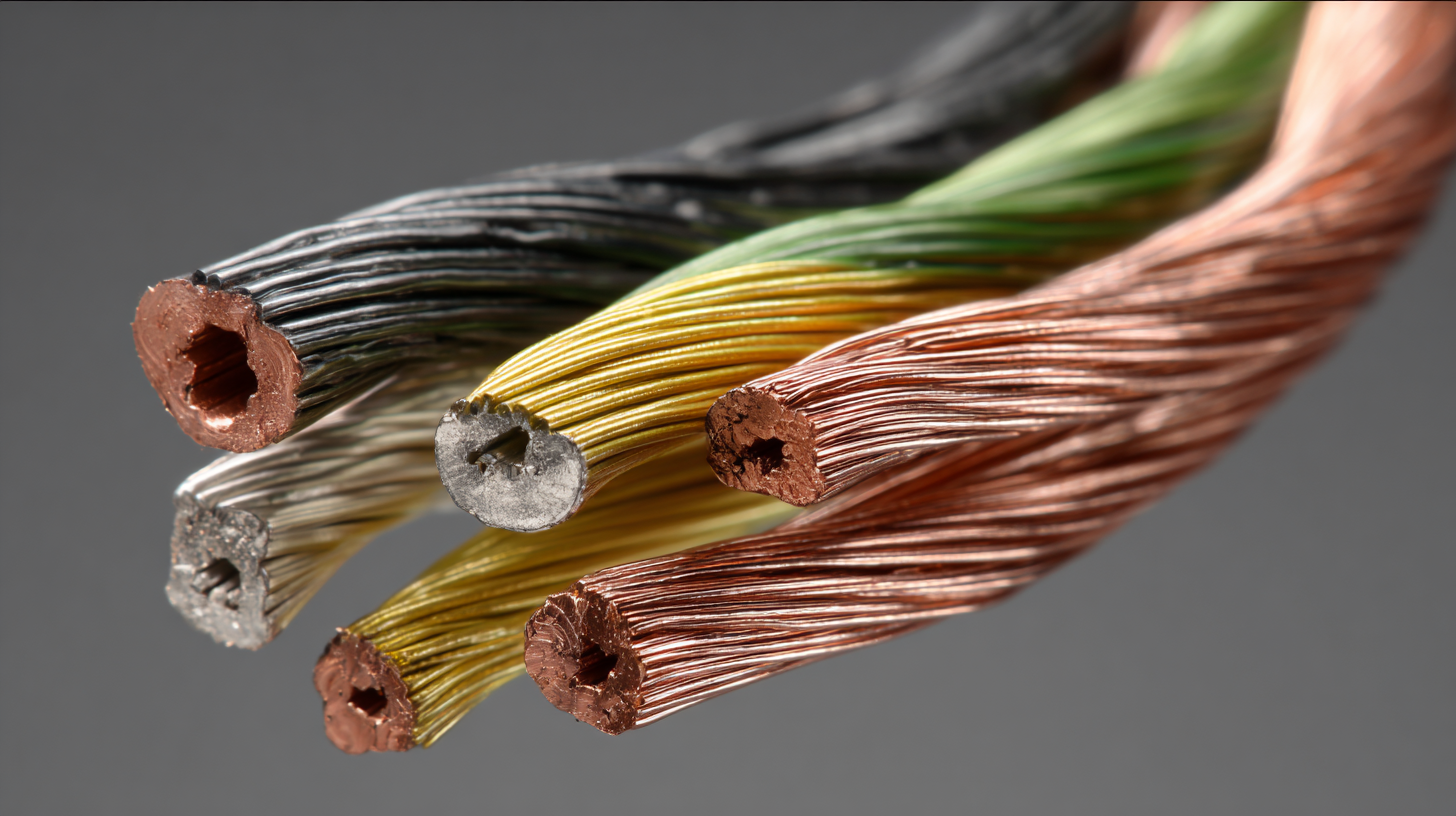How to Choose the Best Wire Harness Wire for Future Tech Trends in 2025
As the technology landscape continues to evolve, the importance of choosing the right wire harness wire cannot be overstated. With the global wire harness market expected to reach a staggering $72.92 billion by 2025, according to a recent market analysis by Fortune Business Insights, industries are increasingly reliant on advanced wiring solutions to support the growing demand for connectivity and automation. Innovations such as electric vehicles, smart appliances, and the Internet of Things are driving the need for high-performance wire harnesses that can withstand the rigors of future applications.

In this guide, we will explore the critical factors to consider when selecting wire harness wire, including material composition, temperature tolerances, and compliance with industry standards, ensuring that your wiring meets not only current specifications but also adapts to the demands of future tech trends.
Understanding the Essential Characteristics of Wire Harness Wire for Future Technologies
When selecting wire harness wire for emerging technologies in 2025, understanding the essential characteristics is crucial. First and foremost, conductivity is a key factor; the wire must efficiently transmit electricity to support advancements such as electric vehicles and smart devices. Copper is commonly favored for its superior conductivity, but innovative materials like aluminum and specialized alloys are gaining traction for their lightweight properties and cost-effectiveness.
Additionally, the wire's insulation should be considered carefully to ensure durability under various environmental conditions. With the rise of IoT and increased demand for flexible electronics, insulation materials that offer resistance to heat, chemicals, and abrasion will be paramount. Furthermore, flexibility in design can enhance the adaptability of wire harnesses for rapid technological changes. This flexibility not only involves the physical characteristics of the wire but also the ease of integration into complex systems, ensuring that the wire harness can accommodate future tech advancements seamlessly. By focusing on these essential aspects, one can choose the best wire harness wire that aligns with the evolving tech landscape of 2025.
Emerging Tech Trends in 2025 and Their Impact on Wire Harness Selection
As we approach 2025, emerging technology trends are poised to reshape the landscape of wire harness design and selection significantly. According to a report by MarketsandMarkets, the global wire harness market is expected to reach $91.49 billion by 2025, driven by the increasing demand for automation, electric vehicles (EVs), and smart manufacturing processes. As these sectors grow, wire harnesses must adapt to advanced requirements such as enhanced durability, flexibility, and lightweight characteristics to support the sophisticated systems being developed.

The rise of electric vehicles is particularly noteworthy, with the International Energy Agency projecting a growth rate of over 30% in EV sales by 2025. This trend underscores the need for wire harnesses that can handle higher voltages and improved thermal management. Furthermore, the incorporation of Internet of Things (IoT) technologies in various industries necessitates the use of connectors and wiring that support high data transmission rates, alongside reliability and resilience in harsh environments. Therefore, selecting wire harness materials that align with these technological shifts will be crucial for manufacturers looking to stay competitive in a rapidly evolving market.
Key Materials for Wire Harness Wire: Performance, Durability, and Compatibility
When selecting wire harness wires for the burgeoning tech trends of 2025, prioritizing materials that ensure performance, durability, and compatibility is essential. High-quality materials, such as Teflon and PTFE, offer excellent insulation properties and resistance to extreme temperatures, making them ideal for devices in rapidly evolving sectors like electric vehicles and smart electronics. These materials not only enhance the longevity of the wire harness but also minimize signal loss, contributing to overall efficiency.
**Tips:** Always consider the specific environmental conditions your wire harness will face. For instance, if the application involves exposure to chemicals or moisture, selecting wires with appropriate weather-resistant coatings will protect against deterioration. Additionally, testing the wire harness against industry standards can help identify compatibility with existing components, ensuring smooth integration into your tech systems.
Another key factor is the weight of the materials chosen. Lighter wires can significantly reduce the overall burden on devices, which is particularly crucial in industries such as aerospace and automotive. Using advanced materials like aluminum or lightweight composites can lead to improved energy efficiency and enhanced performance.
**Tips:** Keep abreast of material innovations that may offer better mechanical properties or reduced manufacturing costs, helping your designs stay competitive as technology continues to evolve.
Performance of Key Materials for Wire Harness Wire in 2025
Innovations in Wire Harness Design to Support Cutting-Edge Applications
As we move toward 2025, the demand for innovative wire harness designs is skyrocketing in response to the rapid advancements in technology. Innovations in materials and manufacturing processes are crucial for developing wire harnesses that can withstand the complexities of future applications, including electric vehicles, smart home devices, and the Internet of Things (IoT). The incorporation of lightweight, high-performance materials can significantly enhance the efficiency and durability of wire harness systems, making them vital for cutting-edge technologies.

Moreover, modular and customizable designs are emerging as a key trend in wire harness development. By allowing manufacturers to tailor their solutions to specific applications, these designs not only optimize space and reduce weight but also simplify installation and maintenance. The use of advanced techniques such as 3D printing enables rapid prototyping and production, giving companies the flexibility to adapt to changing market demands. As we anticipate the technologies of tomorrow, these innovative wire harness designs will undoubtedly play a critical role in enabling seamless connectivity and enhancing the performance of various electronic systems.
Sustainability Considerations in Choosing Wire Harness Wires for Future Projects
As we move toward 2025, sustainability will play a pivotal role in choosing wire harness wires for future projects. With significant growth in the commercial vehicle wiring harness market, expected to reach $25.79 billion by 2031, manufacturers and developers are increasingly focused on eco-friendly materials and processes. Innovations such as wire harness recycling are becoming essential. For instance, new recycling processes that crush and shred old harnesses not only minimize waste but also allow for the recovery of valuable materials, fostering a circular economy within the automotive industry.
Moreover, the integration of fiber optics into automotive wiring harnesses highlights a dual focus on performance and sustainability. Fiber optics facilitate advanced network systems while being lighter and more efficient than traditional materials. As automakers pivot towards sustainability, initiatives that repurpose recycled materials into vehicle components, such as seats, indicate a transformative shift in manufacturing practices. This evolving landscape underlines the necessity for industry stakeholders to prioritize sustainable choices in wire harness designs, ensuring future projects align with both environmental goals and technological advancements.